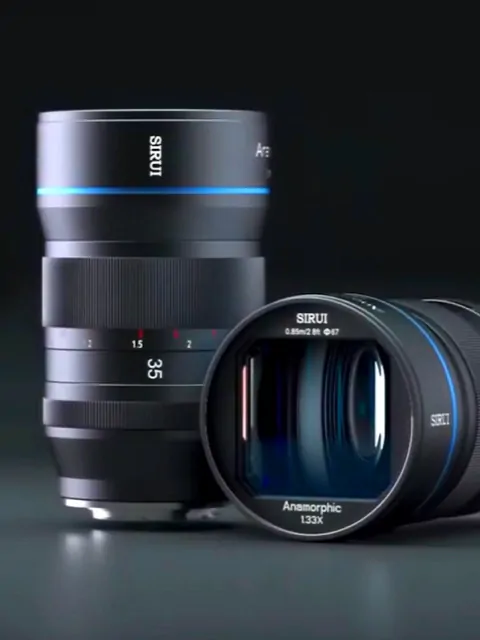What is a tilt shift lens? The tilt-shift lens manipulates optics and perception — making it one of the best tools a photographer or videographer can have at their disposal. The tilt shift effect can be very dramatic but the way to get it is something photographers at any level can achieve it. So, how does it work, and how can you use a tilt shift lens to capture such fascinating images?
Tilt Shift Lens
Overview of the tilt shift lens
For visual artists, every new method or tool they find becomes an opportunity to explore creative territory. And the tilt shift lens can do some pretty amazing things. The effects provided by this lens can be subtle or extreme, invisible or visible.
Nowadays, you can simply add a filter to get the same effect of a tilt shift lens, but how is it done manually? And what kind of equipment is needed to get those incredible and unique perspective shots? Let's begin with a quick definition.
TILT SHIFT LEns DEFINITION
What is a tilt shift lens?
A tilt shift lens is one that changes the orientation and position of the lens mechanism with respect to the image sensor. Typically, a lens and sensor are parallel to one another on the same plane. With this lens, the ability to tilt and/or shift the lens in different directions changes the entire plane of focus, something otherwise known as the Scheimpflug Principle.
By changing the angle of the plane between the lens and the camera’s sensor, one can change the scale of focus and the depth of field. Changing the scale can allow your images to appear miniature. And shifting or tilting can also minimize or maximize the blur behind your subject.
WHAT IS A TILT SHIFT LENS FOR:
- Correcting vertical converging lines
- Panoramic shots
- Blurring select sections
- Changing scale — creating a 'miniature' effect
Before we get into the pros and cons of tilt shift lenses, take a minute to download our FREE Ebook — Camera Lenses Explained Vol. 1 — where we cover everything you need to know about the different types of camera lenses, their unique visual characteristics, and how to use them.
Free downloadable bonus
FREE Download
Camera Lenses Explained
Every type of camera lens has distinct qualities and visual characteristics that every image-maker should understand. Download our FREE e-book to get in-depth explanations on prime vs. zoom lenses, anamorphic vs. spherical lenses, wide angle, standard, telephoto and even specialty lenses that all tell a slightly different story.
It's one thing to describe the tilt shift effect but it can be hard to visualize. For a quick example of what a tilt shift lens can do, here's the opening sequence of The Late Show with Stephen Colbert employs an excellent use of tilt shift photography.
The tilt shift effect explained in The Late Show's intro
Here’s a quick overview of why you might want to try a tilt shift lens out for your next creative project. Tom Buck gives some great tricks for using this lens for photo and video. You'll see for yourself that mastering tilt shift photography is within reach.
What is a tilt shift lens? • Tilt shift photography explained
A tilt shift lens can produce images with a wide-range of effects, from subtle to extreme. In all cases, having this tool as a part of your repertoire will enhance your image capturing skills. Now that we know the basics, let's look at how to use a tilt shift lens.
TILT SHIFT PHOTOgraphy
How to use a tilt shift lens
A tilt shift lens serves as a perspective tool. Whether tricking the audience into seeing something smaller than it is, or managing perspective by "fixing" angled lines on buildings — this lens can do a lot.
Let's look at another video tutorial that offers some creative insights into how to use a tilt shift lens for landscape and nature photography.
The tilt shift effect in action
Shift: Perspective Control
Shifting your lens up or down can eliminate the angle your camera captures. Tilt shift photography can straighten out the converging lines and is often used for architectural photos for this reason.



Tilt shift lenses can fix converging lines
Shift: Panorama
Shifting your lens from left to right makes it perfect for capturing those panoramic shots without moving the actual camera. By keeping the camera still, a series of photos can be taken by adjusting only the lens position, creating gorgeous panoramic photos.
Tilt: Maximize or Minimize Depth of Field
Because a regular lens only focuses on a singular plane, the areas of sharpness are the same distance from the camera. But being able to tilt the lens, makes the focal plane pliable.
Now, it’s possible to capture an image in focus, as well as narrow the field of blur, so there’s a soft blur in the background. This is what leads to the next point.



Tilt shift photography, see source
Tilt: Effect the Scale of Focus
This is the most common use of the tilt shift shot and it makes the image appear miniature.



Tilt shift photography, see source
The illusion of the super shallow depth of field, makes the image appear like we’re looking into a diorama. The tilt shift effect in this image is quite noticeable and warps reality in very interesting ways.
As we've seen, using a tilt shift lens can provide a number of interesting aspects to your images. From simply "correcting" the angle of a tree or building, to creating more extreme visuals like a miniature stadium. There is no end to the creative uses of the tilt shift effect.
What are some creative ways you can use a tilt shift lens?
Free downloadable bonus
FREE Download
Camera Lenses Explained
Every type of camera lens has distinct qualities and visual characteristics that every image-maker should understand. Download our FREE e-book to get in-depth explanations on prime vs. zoom lenses, anamorphic vs. spherical lenses, wide angle, standard, telephoto and even specialty lenses that all tell a slightly different story.
Related Posts
Camera Lenses
Explore Camera Lenses
Explore the different types of camera lenses, and learn how to use them with shot size, angles, and camera movement for impact.
Main Types of Lenses
Lens Focal Lengths
Specialty Lenses
UP NEXT
The different types of lenses
We mastered the tilt shift lens and the next step is to expand your image making with different types of camera lenses. In this post, we'll cover definitions for zoom, parfocal, fisheye lenses, and more. Knowing how each of these lenses works will open up the possibilities for the types of images you can capture.
Up Next: Types of lenses →
Showcase your vision with elegant shot lists and storyboards.
Create robust and customizable shot lists. Upload images to make storyboards and slideshows.






































